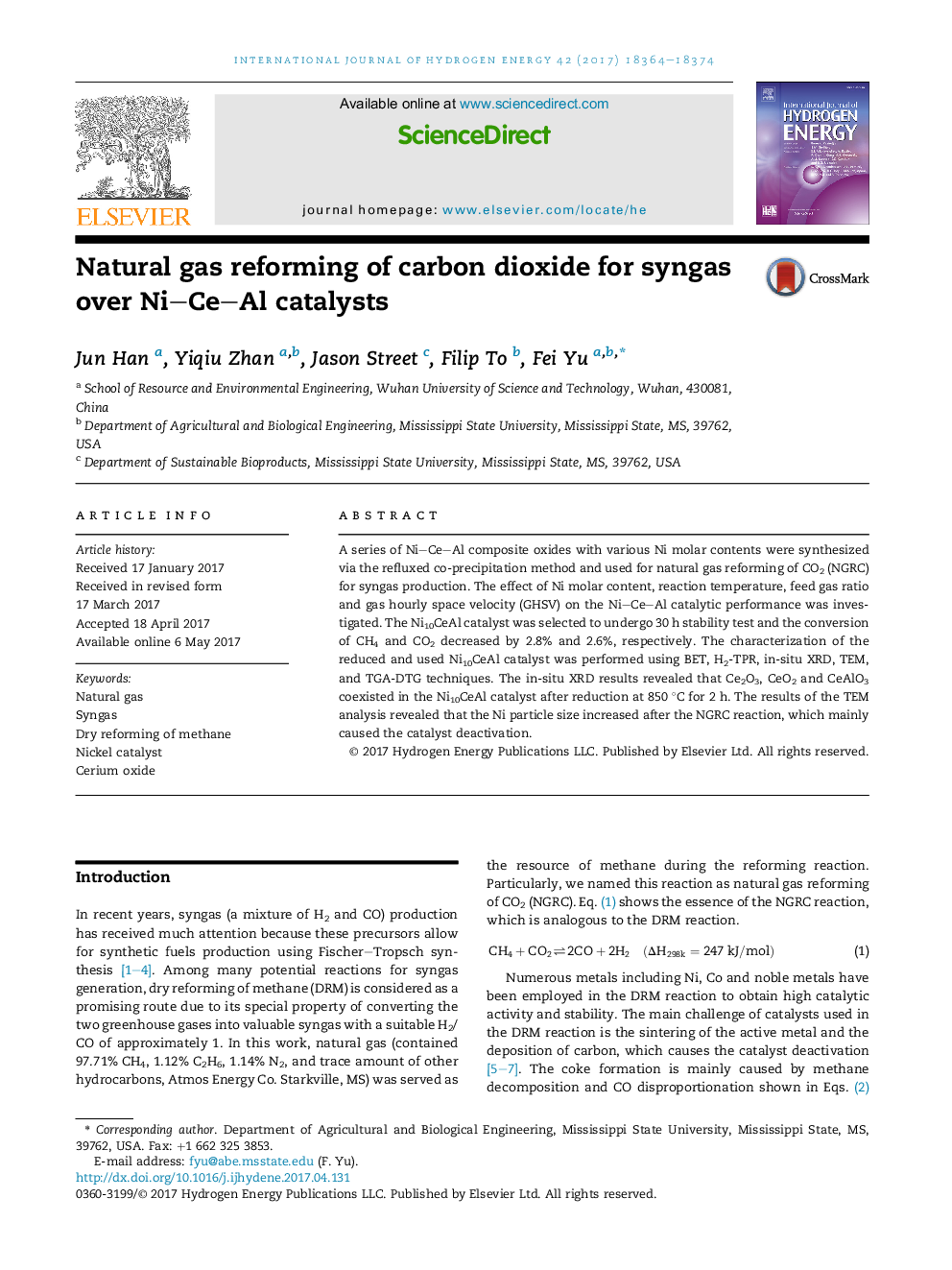| Article ID | Journal | Published Year | Pages | File Type |
|---|---|---|---|---|
| 5146199 | International Journal of Hydrogen Energy | 2017 | 11 Pages |
â¢Natural gas reforming of CO2 (NGRC) to syngas was investigated over the Ni-Ce-Al catalysts.â¢In-situ XRD results revealed that the Ce2O3, CeO2 and CeAlO3 coexisted in the reduced Ni10CeAl catalyst.â¢These cerium mixed oxides resisted the formation of graphitic carbon species in the NGRC reaction.â¢After 30 h stability test, the conversion of CH4 and CO2 decreased by 2.8% and 2.6%, respectively.â¢The loss of BET surface area and the growth of Ni particle caused the deactivation of catalytic activity.
A series of Ni-Ce-Al composite oxides with various Ni molar contents were synthesized via the refluxed co-precipitation method and used for natural gas reforming of CO2 (NGRC) for syngas production. The effect of Ni molar content, reaction temperature, feed gas ratio and gas hourly space velocity (GHSV) on the Ni-Ce-Al catalytic performance was investigated. The Ni10CeAl catalyst was selected to undergo 30 h stability test and the conversion of CH4 and CO2 decreased by 2.8% and 2.6%, respectively. The characterization of the reduced and used Ni10CeAl catalyst was performed using BET, H2-TPR, in-situ XRD, TEM, and TGA-DTG techniques. The in-situ XRD results revealed that Ce2O3, CeO2 and CeAlO3 coexisted in the Ni10CeAl catalyst after reduction at 850 °C for 2 h. The results of the TEM analysis revealed that the Ni particle size increased after the NGRC reaction, which mainly caused the catalyst deactivation.
